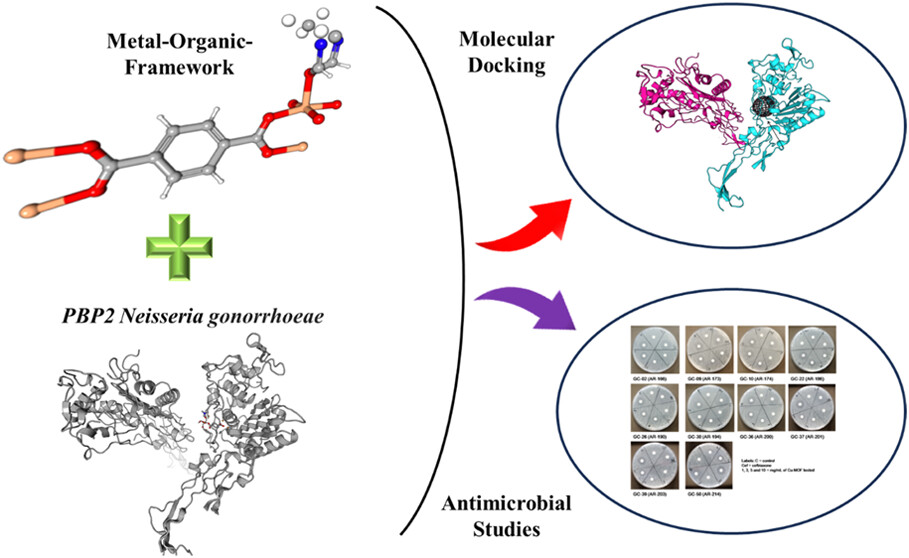Publications
Table of Contents (TOC)
Computational and Experimental Study of Metal–Organic Frameworks (MOFs) as Antimicrobial Agents against Neisseria gonorrhoeae
ACS Appl. Mater. Interfaces 2025,15(14) 20629-20646

Abstract
The emergence of drug-resistant superbugs poses a critical global health threat, necessitating innovative treatment strategies. Neisseria gonorrhoeae (Ng) causes a sexually transmitted disease called gonorrhea, and the bacterium has shown alarming resistance to conventional antibiotics, underscoring the urgent need for novel therapeutic approaches. In the current study, we interfaced computa- tional biology and materials science to investigate the interactions between in-house synthesized metal−organic frameworks (MOFs) and the penicillin-binding protein 2 (PBP2) of Ng, a key target for β-lactam antibiotics. Using molecular docking and interaction analyses, we identified three promising MOFs, namely, Fe-BDC-258445, Cu-BDC-687690, and Ni-BDC-638866, with optimum binding scores and stable interactions. These scores indicated strong interactions with PBP2, suggesting their potential as therapeutic agents. Antimicrobial screening using a standard disk diffusion assay demonstrated that the Cu-BDC MOFs were bactericidal for multiple strains of Ng, whereas the Ni-BDC and Fe-BDC MOFs were nonbactericidal. The Cu-BDC MOF did not kill other Gram-negative bacteria, thus demonstrating specificity for Ng, and showed low toxicity for human Chang conjunctival epithelial cells in vitro. No significant leaching with biological activity was observed for the Cu-BDC MOF, and microscopy demonstrated the loss of gonococcal piliation and damage to the cell membrane. These findings underscore the potential of Cu-BDC MOFs as antimicrobial agents for further development.
For citation:
Kant, R.; Prajapati, M.; Das, P.; Kanaras, A. G.; Christodoulides, M.; Kant, C. R.
"Computational and Experimental Study of Metal–Organic Frameworks (MOFs) as Antimicrobial Agents against Neisseria gonorrhoeae"
ACS Appl. Mater. Interfaces 2025,15(14) 20629-20646 doi:10.1021/acsami.4c15851